Health
A New Study Reveals that Children with Cerebral Palsy have 25 Times Higher Risk Of Premature Death
Published
5 years agoon
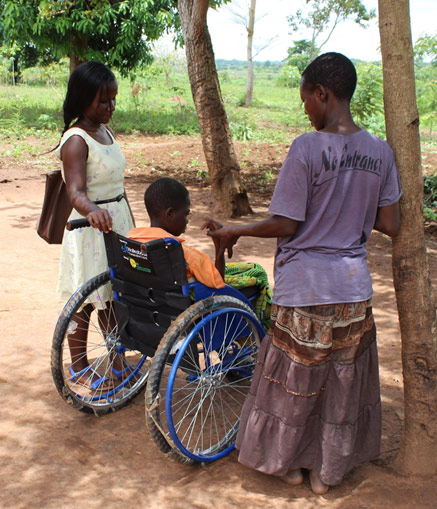
The largest study on Cerebral palsy in Africa to date reveals that interventions to prevent malaria infections such as the use of insecticide-treated mosquito nets, coupled with caregiver training and support, including best feeding practices and simple measures to prevent other infections, could potentially reduce mortality in children with Cerebral palsy in this region. The study found out that the main causes of death were malaria and aneamia. The children with severe malnutrition and severe motor impairments were the most likely to die.
Cerebral palsy (CP) is a developmental disorder and the most common cause of childhood physical disability globally. CP is significantly more prevalent in low-income and middle-income countries like Uganda where the researchers noted a lower prevalence in the older (8-17 years) than younger (2-7 years) age groups as demonstrated in the findings of an earlier study conducted in 2015. https://www.thelancet.com/journals/langlo/article/PIIS2214-109X(17)30374-1/fulltext
The decline in prevalence of children with CP with increasing age in the 2015 study, led the researchers to hypothesize about the risk of premature death in these children.
In order to get a better understanding of the situation, a follow-up study was carried out at the Iganga-Mayuge Health and Demographic Surveillance Site (IM-HDSS) in eastern Uganda. Earlier in 2015, the researchers had screened 31,756 children and identified 97 (aged 2–17 years) who were diagnosed as having CP. The children with CP were followed up to 2019 and compared with an age-matched sample of the IM-HDSS general non-CP population (n=41, 319). The rates and causes of deaths in these groups were determined.
The research team found that the rate of death was 25 times higher in the CP group than the general non-CP population sample. The mean age at death among the CP group was 10•2±5•9 years and 7•2±4•8 years among the general non-CP population sample. In the CP group, females and older children (10-18 years) had higher relative risks of death in relation to the non-CP general population. Significantly, in children with CP, there was an almost 7 times risk of death in those with severe motor impairments compared to those with milder ones. In addition, those with severe malnutrition had a more than 3 times higher risk of death than children without severe malnutrition. The causes of death were from common conditions like anemia, malaria and common infections.
The results of this study, are the first of its kind to reveal the true extent of the hidden humanitarian crisis of excessive mortality in the CP child population. Severe malnutrition as one of the risk factors of excessive mortality plays a dynamic multifaceted role, partly aggravated by severe oral motor impairments which lead to chewing and swallowing problems, and the need for special foods and prolonged feeding times. Furthermore, the age pattern for mortality in children with CP confirms this study’s hypothesis with many dying when approaching school age, compared to the non-CP general population. The probable reasons for this may be attributed to caregivers eventually losing hope as these children grow older when they realize that their child will not be cured, or alternatively as a result of the minimal time provided to the child with increasing age (including during supervised feedings), which increases their vulnerability.
The higher mortality among the females may suggest a preferential treatment of boys with CP in Uganda which needs further study. Finally, regarding the causes of death, the frequent occurrence of anemia as a cause of death may signify the interplay of the conditions of underlying malaria infections and severe malnutrition in severely impaired children with feeding problems.
A multipronged approach including raising awareness about this challenge should be emphasized locally and internationally to promote the development of appropriate health and advocacy policies. Although efforts to reduce child mortality are quite evident in the recent decades, targeted interventions to reduce mortality in the CP child population, such as the use of insecticide-treated mosquito nets to prevent malaria infections, provision of easy to use, locally available nutritious foods coupled with caregiver information and support should be encouraged. Reinforcement and regular review of the existing laws and policies related to their specific requirements should be enacted. In general, further research to identify long-term risk factors and immediate causes of death in children with developmental disabilities in the region is also urgently required
These findings are to be formally published in the journal ‘PLOS ONE’ and entitled: “Excessive premature mortality among children with cerebral palsy in rural Uganda: a longitudinal, population-based study”.
Publication
Namaganda LH, Almeida R, Kajungu D, Wabwire-Mangen F, Peterson S, Andrews C, et al
PLoS One 2020 ;15(12):e0243948
Related story by collaborators at Karolinska institute here:
This study was funded by the Swedish Research Council, and Promobilia. Dr. Angelina Kakooza – Mwesige
Makerere University, College of Health Sciences
Kampala, UGANDA.
On behalf of the Researchers
You may like
-


Call For Applications: Annual Innovation Commercialisation Award
-


International Fellows Recruitment – Wellcome Sanger Institute
-


Makerere University Launches Knowledge-Sharing Platform to Drive Innovation and Economic Growth
-


Makerere University CoBAMS Staff celebrate 2025 achievements
-


Makerere University Leaders Call for Excellence in Research and Supervision as Academic Staff and PhD Students Receive Certificates
-


Makerere University Explores Strategic Partnership with Tsinghua University in Safety Science, Disaster Resilience and Public Health
Health
Holistic Retirement Planning includes Psychological, Emotional & Social well-being across all Career Stages
Published
1 week agoon
January 12, 2026By
Mak Editor
The Makerere University Retirement Benefits Scheme (MURBS) on Thursday, 8 January 2026 organised a Member Sensitisation Session on “Understanding Identity Shifts; Developing Routines; Sustaining Motivation and Purpose”. The session focused on holistic retirement planning, emphasising that readiness for life after work goes beyond finances to include psychological, emotional, and social well-being across all career stages—from early career to post-retirement.
The session featured a keynote presentation by Professor Seggane Musisi, who highlighted how work-related titles and roles often shape personal identity, and how retirement can trigger a sense of loss if individuals are unprepared to redefine themselves. Members were encouraged to consciously design a post-work identity grounded in values, purpose, and community contribution.
Participants learned practical strategies for:
- Preparing early for retirement at different career stages;
- Developing healthy, meaningful routines that support mental stability and productivity;
- Sustaining motivation and purpose beyond formal employment;
- Managing stress, maintaining physical and mental health, and nurturing social connections; and
- Balancing family responsibilities with personal well-being.
The discussion also addressed cultural realities of retirement in Uganda, including family expectations, social obligations, and financial pressures. Special attention was given to age-related challenges such as dementia, depression, and chronic illness, underscoring the importance of preventive health care, emotional resilience, and timely professional support.
Overall, the session reinforced the message that retirement is a lifelong transition, not a one-time event. Members were encouraged to plan early, adapt continuously, and intentionally design a fulfilling, purposeful life beyond work—psychologically, socially, and financially.
To view the session, please click the embedded video below. Further below is the presentation.
Health
Kampala at a Crossroads: What New Research Reveals About Mobility, Governance, and the City’s Public Health Risks
Published
2 weeks agoon
January 8, 2026
Every day in Kampala, millions of people inch through gridlock, dodge swarming boda-bodas threading through narrow gaps in traffic, inhale dangerously polluted air, and walk along streets rarely designed for pedestrians. These conditions, and more, are often dismissed as ordinary transport frustrations. Yet researchers at Makerere University School of Public Health (MakSPH) are examining how such everyday realities translate into public health outcomes, shaped not simply by congestion, but by governance, policy, and power. Their work forms part of a multi-country project investigating the political economy of urban mobility in three African cities.

Co-led by Dr. Aloysius Ssennyonjo, the Principal Investigator and health systems and governance researcher at MakSPH, together with Uganda’s Country Principal Investigator, Dr. Esther Bayiga-Zziwa, a road safety and injury epidemiologist, and Co-Principal Investigator Dr. Jimmy Osuret, an injury prevention researcher, the project titled The Political Economy of Urban Mobility Policies and Their Health Implications in African Cities (PUMA) applies a political economy lens to understand how political interests, institutional arrangements, and power dynamics shape mobility systems and their consequences for public health in Kampala, Kigali, and Lilongwe.
To note, political economy analysis examines how public decisions are shaped by the interplay of politics, interests, institutions, and resources, in short, who has influence, who controls what, and how money and power circulate within a system. In Kampala, a capital of nearly two million residents whose daytime population swells with commuters, this lens helps explain why some transport options attract funding and enforcement while others are tolerated, neglected, or contested. These choices are not just technical, but reflect competing interests and priorities, with consequences for safety, equity, and the everyday well-being of those moving through the city.

Now, through the NIHR-funded project, the Ugandan team is currently working with colleagues from the University of Rwanda, led by Professor David Tumusiime, and Kamuzu University of Health Sciences in Malawi, led by Dr. Dominic Nkhoma. The research partnership aims to generate evidence that can strengthen mobility governance and improve public health outcomes across the three African cities above, with advisory support for the research consortium from the University of Antwerp in Belgium and Canterbury Christ Church University in the UK.
Explaining the project’s rationale for the Politics of Urban Mobility, or PUMA, during the 2025 Universal Health Coverage Day webinar held on December 12 under the theme “Mobility, Costs, and Politics: How Urban Systems Shape Access and Progress Towards Universal Health Coverage in African Cities,” Principal Investigator Dr. Ssennyonjo said Africa is urbanising at an unprecedented pace. Projections show that by 2050, nearly 60% of the continent’s population will live in cities, a shift that is intensifying transport pressures and increasingly turning everyday mobility into a public health risk.

“Rapid urbanisation has created multiple challenges: transport systems are under strain, risks and vulnerabilities are rising, and opportunities for healthy behaviours such as walking are often limited. Access to livelihoods is also affected, with broad implications for health,” Ssennyonjo noted, adding: “Crucially, these issues are shaped by political and governance dynamics, yet few initiatives explicitly address them. This gap motivated our focus on the politics and governance of urban mobility.”

He mentioned that health outcomes are shaped by social, economic, and environmental factors, with transport costs, risks, and stress often posing greater barriers than medical fees alone to achieving affordable health for all. He noted that the PUMA project brings together multidisciplinary teams to study how governance and political dynamics shape urban mobility, public health, and development, a perspective reflected in Prof. Julius Kiiza’s observation that effective urban development relies on coordinated action by diverse stakeholders across sectors to improve health outcomes, though emphasising the primacy of politics.
“Uganda and Singapore had comparable levels of underdevelopment in the 1960s. Under Lee Kuan Yew, Singapore embarked on a deliberate nation-building project. Today, it is among the smartest cities globally, outperforming many Western cities in clean government, mobility, and liveability. Why are we lagging behind? The answer, I argue, lies largely in the nature of our politics,” Prof. Julius Kiiza cogently argued.
He intimated that the result has been cities that are “unreliable, unsafe, unsmart, and chaotic,” noting that claims of inclusive urban development often ring hollow. “I have argued, and repeat here, that boda bodas as a symbol of inclusivity represent a false model of inclusion. We must interrogate this and invest in better urban transport systems and wider, well-planned highways,” he affirmed.

Prof. Kiiza urged policymakers and practitioners to move beyond piecemeal technical fixes and instead treat urban mobility as a governance challenge requiring coordinated, cross-sector action. He stressed the importance of aligning transport planning with public health, housing, employment, and skills development, arguing that safer, more liveable cities depend on institutions that work together and are accountable to the public. Such reforms, he noted, demand sustained political commitment and inclusive dialogue across government, academia, civil society, and the private sector, precisely the terrain the PUMA project is engaging, by convening stakeholders and shaping a shared research agenda around Uganda and the continent’s urban mobility challenge.

Indeed, on November 21, 2025, the Ugandan team convened a national stakeholder workshop in Kampala, bringing together a wide range of stakeholders. Opening the workshop, Assoc. Prof. Suzanne Kiwanuka, Head of the Department of Health Policy, Planning and Management (HPPM) at MakSPH, commended the team for highlighting what she described as a long-underexplored dimension of Uganda’s urban health landscape: mobility and its governance.
Reflecting on her own experience, she noted how boda-bodas have become increasingly indispensable for millions seeking quick, flexible transport, but also carry complex health, safety, and economic implications that demand multisectoral attention, calling for a balanced, evidence-driven dialogue that recognises their value while also addressing the infrastructural and policy gaps that shape mobility systems in Uganda’s rapidly growing cities.
“I sometimes use boda-bodas,” Assoc. Prof. Suzanne Kiwanuka said. “They are necessary when you need to move quickly during heavy traffic. Yet we all know how unsafe they can be. This PUMA initiative is timely to generate evidence not only on the politics of urban mobility and its health implications, but also its economic consequences.”

Notably, road traffic crashes remain one of Uganda’s most urgent public health threats today. The recent Uganda Police Force Annual Crime Report 2024 recorded 5,144 road deaths, a seven per cent rise from 2023, with motorcyclists accounting for nearly half of all fatalities. In Kampala, pedestrians, cyclists, and motorcycle riders constitute 94 per cent of all fatal crashes, according to the Kampala Capital City Authority. Thousands more suffer life-altering injuries each year.
Still, evidence from MakSPH, through its Centre for Trauma, Injury and Disability Prevention (C-TRIAD) and the Johns Hopkins International Injury Research Unit (JH-IIRU) under the Bloomberg Philanthropies Initiative for Global Road Safety (BIGRS), shows that the design and use of city roads are worsening the risk environment. Between 2021 and 2023, the team conducted more than one million roadside observations across Kampala, finding that while only five per cent of vehicles are officially recorded as speeding, those that do travel at an average of 57 km/h, well above safe limits for dense urban corridors, making city roads increasingly unsafe.

The World Health Organization (WHO) guidelines, cited in the report, recommend speed limits of 30 km/h on community roads and in urban areas where pedestrians, cyclists, and other vulnerable road users share space with motorised traffic, and 50 km/h on major urban roads. Yet the findings show that six in ten vehicles on community roads exceed these limits, heightening risks for those least protected and underscoring the need for lower-speed zones, traffic-calming measures such as speed humps and raised crossings, and consistent enforcement of traffic regulations.
For the PUMA team in Uganda, the writing on the wall shows that these rising injuries coincide with worsening congestion and rapid urbanisation, yet city mobility policies within Kampala remain heavily oriented toward road expansion and vehicular flow, with limited attention to safety, health protection, or non-motorised transport. This policy imbalance, then, explains why daily commuting remains hazardous and why progress on safer streets has been slow.

The study uses a three-tiered approach that combines policy analysis, regional evidence, and local experiences to examine how mobility decisions are made in Kampala, Kigali, and Lilongwe, who holds authority, and how these processes affect public health and equity. This is strengthened by structured co-creation workshops with practitioners, policymakers, and community actors, which reveal how governance functions in practice, often diverging from what is written on paper.
In parallel, the research team is conducting a continent-wide review of academic and grey literature to map regional trends, gaps, and the broader forces shaping African mobility systems. Together, these streams enable the researchers to compare cities, identify shared challenges, and build a grounded analytical framework for improving mobility governance across Africa.
In Kampala, preliminary findings by the MakSPH PUMA research team show a city governed by many mobility policies but marked by weak mobility governance. The team shared that Kampala operates under a dense mix of frameworks, from the National Integrated Transport Master Plan and National Urban Policy to road safety, climate, and KCCA development plans. While these documents acknowledge congestion, urbanisation, and road injury risks, they also reveal overlapping mandates, blurred institutional roles, and limited coordination authority.

Key government Ministries, Departments, and Agencies (MDAs) actors include the Ministry of Works and Transport, KCCA, the Ministry of Lands, the Office of the Prime Minister, and the Ministry of Finance, with the Ministry of Health conspicuously absent despite clear health implications. Policy attention, according to the early findings, remains heavily skewed toward road transport, leaving non-motorised mobility and major health pathways, noise exposure, psychosocial stress, community severance, heat, and mobility independence largely unaddressed.
Governance realities are further shaped by political processes, including electoral cycles, informal negotiations with transport unions, selective regulation of boda-bodas, and heavy reliance on development partners that often influence what is prioritised and implemented. Together, these dynamics help explain stalled master plans, inconsistent enforcement, and resistance to progressive interventions. While the PUMA research remains at a preliminary stage currently, the emerging findings underscore the need for an integrated, multisectoral mobility agenda that places health at the centre of Kampala’s transport policy and practice.

Health
How People Earn a Living is Contributing to Malaria Risk in Uganda, Study Finds
Published
2 weeks agoon
January 5, 2026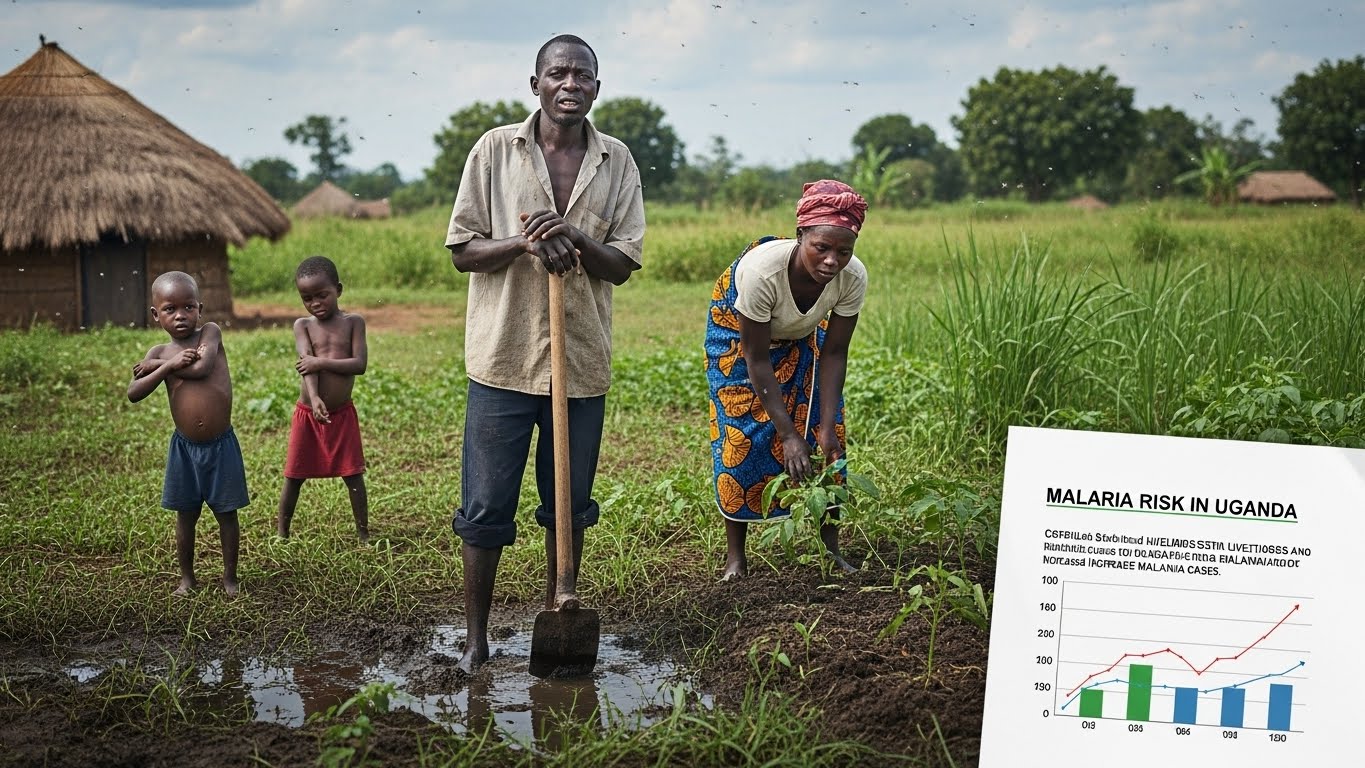
Livelihood activities such as farming, livestock keeping, construction, and night-time work significantly increase malaria risk in Uganda, according to new research by Dr Kevin Deane, a development economist at The Open University, UK, and Dr Edwinah Atusingwize and Dr David Musoke, a Research Associate and Associate Professor of Environmental Health at Makerere University School of Public Health, respectively.
The study, Livelihoods as a key social determinant of malaria: Qualitative evidence from Uganda, published on December 2, 2025, in the journal Global Public Health, examines how everyday economic activities shape exposure to malaria, often undermining conventional prevention measures such as insecticide-treated nets and indoor residual spraying. The findings are based on qualitative fieldwork conducted in June 2024 in Busiro County, Wakiso District, a peri-urban area with persistently high malaria transmission in Uganda.
Using a qualitative design, the researchers conducted 14 key informant interviews, 10 focus group discussions, and 11 in-depth interviews with households recently affected by malaria, engaging 100 participants from communities, health services, local government, and civil society across Kajjansi, Kasanje, and Katabi Town Councils, as well as Bussi Sub-County, in Busiro South. Their analysis, guided by the Dahlgren–Whitehead social determinants of health model, enabled the researchers to situate malaria risk within the broader social, economic, and environmental conditions shaping how people live and work.
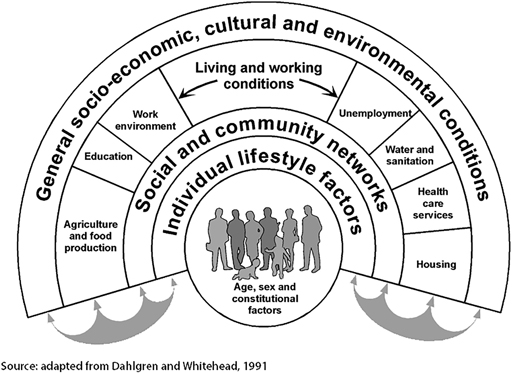
In their findings, participants linked malaria exposure to agricultural practices, among which is maize cultivation near homes, which was associated with increased mosquito density during the rainy season. “One of the most common crops cultivated in Uganda, which many rely on as staple foods, creates environments in which mosquitoes are attracted to and thrive, often in settings where maize is grown near homes in rural areas and urban areas. This increases mosquito density around homes and contributes to increased outdoor biting and the number of mosquitoes entering houses,” the study argues.
Its authors say this poses a difficult policy challenge because maize is central to household food security, leaving few practical options for reducing exposure. They argue that proposals to keep maize away from homes are often unrealistic for families with limited land or those farming in urban areas, while targeted control during flowering periods may have limited impact given mosquitoes’ ability to travel beyond cultivation sites.

Beyond crop farming, the study reports that livestock rearing, especially zero-grazing cattle kept close to houses, attracts mosquitoes into household compounds. Other livelihood activities, including construction and brick-making, created stagnant water-filled pits that served as breeding sites, while night-time livelihoods, such as street vending, guarding, fishing, bar work, and brick burning, among others, prolonged outdoor exposure during peak mosquito biting hours. Gender further shaped risk, with women’s livelihoods and caregiving responsibilities frequently exposing young children alongside them.
“The evidence we present illustrates the unintended health consequences of development strategies intended to promote key livelihood activities, food security, and poverty reduction. There are no straightforward solutions given the complexity of these relationships and the importance of these livelihoods for many households,” the authors assert.
They conclude that malaria elimination efforts will fall short unless livelihoods and development activities are explicitly integrated into malaria prevention strategies, calling for stronger alignment between public health, agriculture, urban development, and economic policy.
Please see below for the study:
Trending
-

 Research2 weeks ago
Research2 weeks agoInternational Fellows Recruitment – Wellcome Sanger Institute
-

 Health2 weeks ago
Health2 weeks agoKampala at a Crossroads: What New Research Reveals About Mobility, Governance, and the City’s Public Health Risks
-

 Health1 week ago
Health1 week agoHolistic Retirement Planning includes Psychological, Emotional & Social well-being across all Career Stages
-
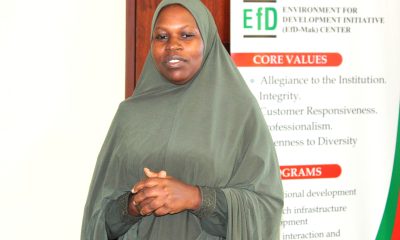
 Business & Management2 weeks ago
Business & Management2 weeks agoDr. Aisha Nanyiti is IEA’s Featured Economist for Jan 2026
-
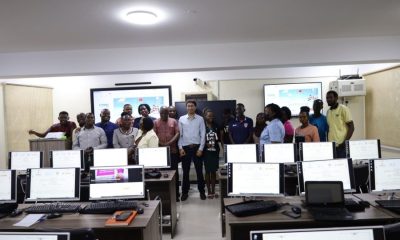
 Computing & IS1 day ago
Computing & IS1 day agoCoCIS CIPSD Short Courses Jan-Mar 2026
